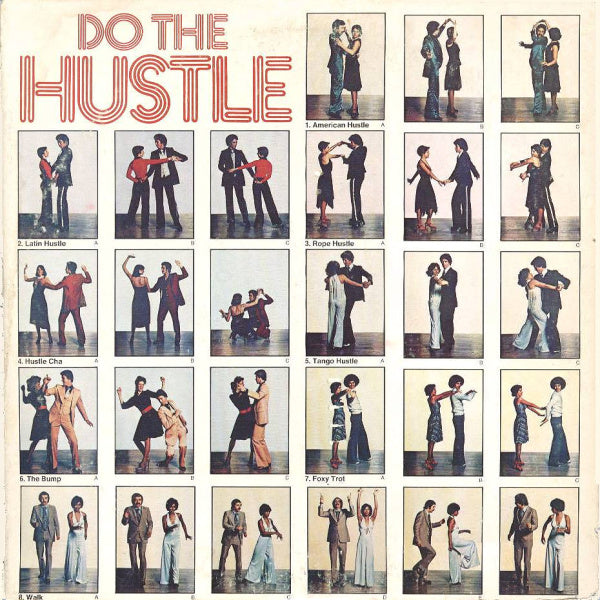
Manhattan is arguably the city in the world most associated with hustling. Where else, circa 1977, could you find an heiress-turned-fashion designer (Gloria Vanderbilt), the most powerful artist in the world (Andy Warhol), an iconic writer (Truman Capote), and a culture-revolutionizing drag queen (Divine), all rubbing elbows and doing the aptly named dance that many, though not all, claim originated in NYC? Either way, “the hustle” is a love letter to the city and state’s spirit.

We all know what the hustle lifestyle is. (Sharp elbows, raised hands, gallons of coffee, the storming of castles, and shattering of glass ceilings.) But what’s the dance? It’s used as a kind of catchall term for disco dance moves that reached their apotheosis on the addled dance floors of the late 1970s. These days, the Hustle dance refers to a formal dance with partner, performed to disco music. There’s some mambo and salsa in there, and also some swing dance. Originally called the Latin hustle, it’s now called the New York hustle (by some).
Confused? Same. We tapped Raul Martinez, a performer at the Vienna State Opera Ballet-turned-National Museum of Dance director-turned private instructor, to find out what the hustle can tell us about human nature, how it relates to classical forms, and where it can take us today.
New York Makers: How did you get your start dancing?
Raul Martinez: I started dancing ballet when I was 12 in 1983 in Mexico City. I studied at the National School of Fine Arts (INBA) and danced with the National Mexican Ballet Company and Vienna State Opera Ballet. I was the founder and director of the National Museum of Dance School of the Arts for 10 years and director of the entire National Museum of Dance for four years.
NYM: As a classical dancer, what are your thoughts generally about commercial, trendy crazes like the Hustle?
RM: I think they are very important and necessary for society. We are social entities and by nature have innate rhythm. We’ve all seen toddlers dance as soon as they hear rhythmic tunes. The hustle, like tango, salsa, waltz or any popular dance style brings people together. Dance keeps evolving and new trendy styles emerge all the time. You also see old styles reemerge with current modern touches.
NYM: Do dances like the hustle ever draw people who might otherwise not be interested in dance to it?
RM: Certainly! People are generally followers. If they are out with a friend or friends who like to dance they are easily coaxed to join and realize how fun it is!
NYM: Did you ever do the hustle in nightclubs back in the day? How much skill does it require?
RM: Of course! “Back in the day”, we were so enamored of Saturday Night Fever. We all memorized the steps of John Travolta. I would credit him for making it so popular and cool. As far as skill, with a couple of drinks, everyone thinks they are John Travolta! On a serious note, you do have to have natural rhythm to look good but as with everything, it takes practice. During the disco culture you did practice because clubbing was a pastime.
NYM: Any thoughts on the roots of the hustle and how they differ / relate to other popular dance crazes?
RM: I believe that it originated in the Bronx, New York City, amongst the Puerto Rican population and it pulls steps from other older forms of dance. I, too, come from Latin roots and it is very common to dance at home parties with friends and family even today. The essence of the hustle is really a melting pot of styles but has now been placed as the quintessential modern American social dance. Once again, popularized by John Travolta in Saturday Night Fever. If you dig deep enough, nothing is really new, things just fade and then re-emerge with modern flair. I‘m sure that the Puerto Ricans would tell you that it originated in Puerto Rico.

If you ever get sick of cat videos (it’s hard to imagine, but these are apocalyptic times), may we suggest googling hustle videos? It brings that same hit of gleeful joy, mixed with giddy, buzzy confusion. (“WHAT ON EARTH?”).
And for those who want to take a more anthropological approach, good news. Studio 54: Night Magic, an exhibit dedicated to the venue, and featuring the hustle, opens March 13, 2020 at the Brooklyn Museum. Viewers can explore nearly 650 objects, including an extensive collection of photographs and drawings. The exhibit will also explore the social politics of the club, which became a breeding ground for creative revolution, featuring sex, drugs, fashion, and of course, hustling.

Leave a comment